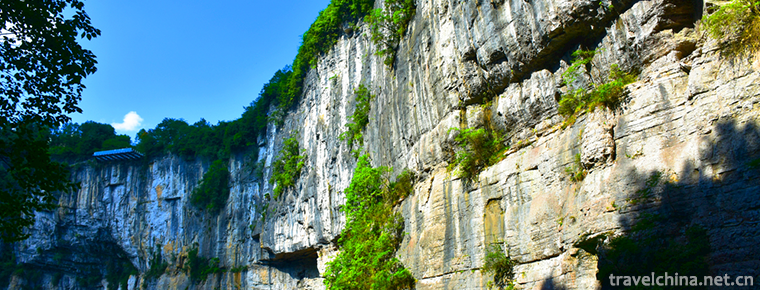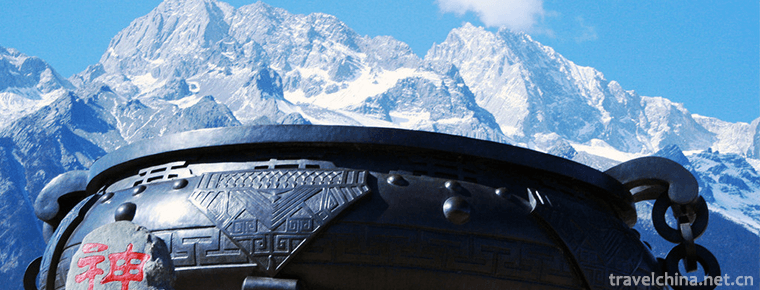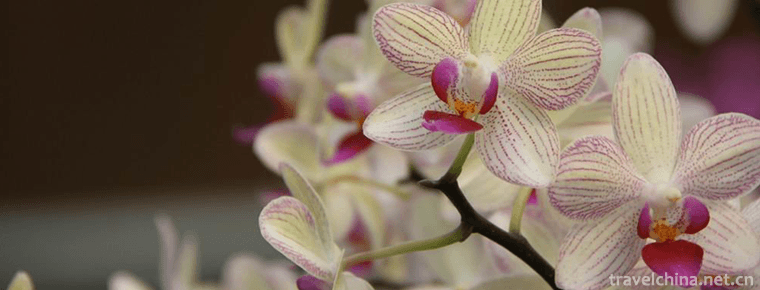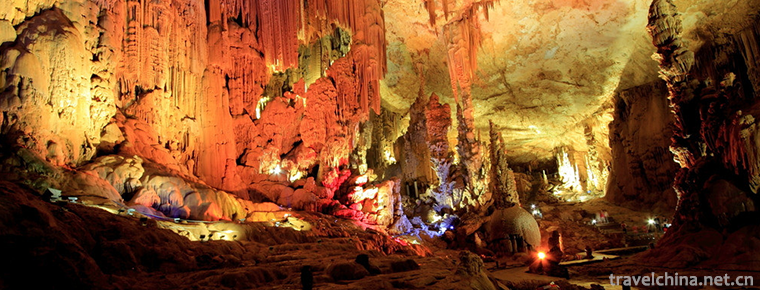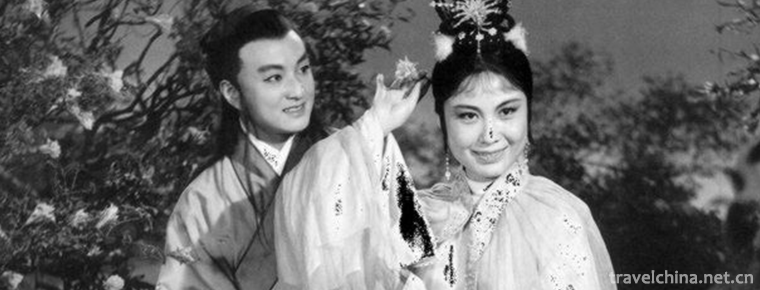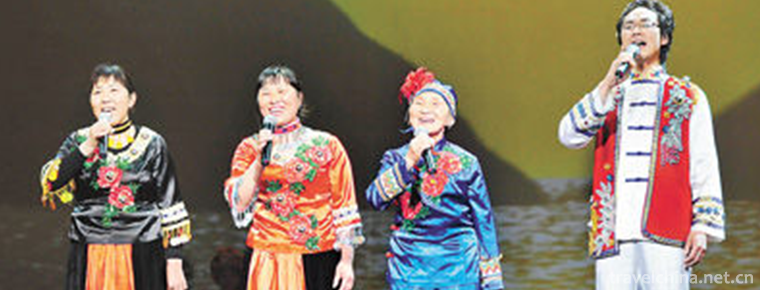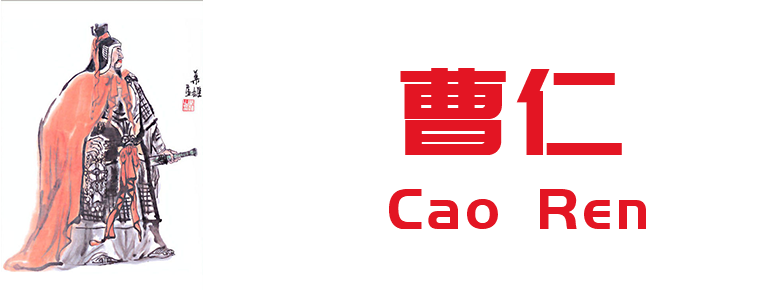Pot dance
Pot dance
Guozhuang dance, also known as "Guozhuo", "Gezhuang", "Zhuo" and so on, is one of the three major Tibetan folk dances. Guozhuang Dance is distributed in Changdu and Naqu of Tibet, Aba and Ganzi of Sichuan, Diqing of Yunnan and Tibetan inhabited areas of Qinghai and Gansu.
When dancing, men and women usually form circles with half circles in each row. One person leads the dance. They ask and answer questions and sing repeatedly, without accompaniment of musical instruments. The whole dance is composed of two stages of slow and fast dancing. The basic movements are "trembling over legs", "rolling over steps", "squatting over legs", etc. The dancer's arms are mainly shifted by pulling, swinging and shaking. The formation moves clockwise. The circles are large or small, occasionally changing the "dragon wagging tail" pattern.
On May 20, 2006, Guozhuang Dance was approved by the State Council of the People's Republic of China and listed in the first batch of national intangible cultural heritage list.
historical origin
Comprehensive overview
There is no exact historical record about the origin of Guozhuang Dance, but from the analysis of its performance form and dance language of action, we can confirm that it is a primitive form of dance. This can also be confirmed on the original dance map of the painted pottery basin unearthed from the ancient tomb of Tujia Sunzhai in Datong County, Huangshui, Qinghai Province. The pottery basin was "dated from 5,000 to 5,800 years ago. Guozhuang Dance may have come into being and developed in the comprehensive factors of totem belief, witch dance (witch dance imitating the action of tribal totem), ritual dance of sacrificial alliance, etc. in the primitive period.
embryo
Guozhuang Dance is enriched and perfected with the development of Tibetan production and life. Because of confusion about various phenomena in nature, the ancestors of primitive society produced various forms of superstition and religion, such as sorcery and witchcraft, fetishism and totem. This religious belief permeates the production and life of the ancestors, and also integrates into the folk song and dance art. All the six clans in ancient Tibet worshipped totems. "The upper part of Ali is the area of elephants and beasts; the central part of Tibet is the area of beasts and apes; and the lower part of Dokang is the area of apes and monkeys." The establishment of totem idols is the thought of oneness between you and me, and between you and your God. From the basis of this thought and method, the dance imitating totem form and action came into being. The imitation of birds and animals and dancing is the reappearance of the thought and method of the unity of man and God and the mysterious infiltration of clans.
In primitive religious beliefs, Guozhuang and Huotang are places where the gods gather and where the fate of individuals and families is maintained. Therefore, people comfort themselves and gain confidence by offering sacrifices and other forms of pleasing ghosts and gods. People can not only pass prayers and wishes to gods through dancing, but also get inspiration and blessings from gods. Dancing Guozhuang Dance is the way that primitive ancestors communicated with gods in sacrifice to gods. With the passage of time, the social function of Guozhuang Dance has gradually changed from rewarding gods to entertaining people. Dancing around bonfires is the preservation of the traditional form of dancing around fires of primitive clan groups, and is also one of the bases on which Guozhuang Dance originated in primitive society.
Initial form
Art form develops from low to high, from simple and simple to complex and diverse. With the improvement of social productivity and the development of art, the Tibetan folk song and dance art "Guozhuang Dance" gets rid of the direct dependence on the primitive productive labor and the pure objective simulation, consciously exerts its subjective initiative, and expands the scope of reflecting social life.
From the 9th century B.C. to the 5th century A.D., the Tibetan Plateau was in the "Xiaobang Period" in Tibetan history. At this time, the dance has passed the germination of the primitive period, and gradually entered the embryonic stage of the development of Tibetan dance. "Zhuo Dance" in ancient times was mostly used in sacrificial ceremonies such as altars, vows and religions. Just as Tibetan experts and scholars have textually studied the tablet stone of Tubo and the Tibetan relics of Dunhuang Grottoes, they believe that the formation and development of the Guozhuang dance is directly related to the initial pledge activities. Xiaobang period is an important stage for Guozhuang Dance to form its unique artistic style. The tribal oath in Xiaobang period was one of the most important political activities at that time. According to research, in Tibetan literature, "oath" is often written as "Zhuozi" ("Zhuozi" means dance, and "Zhi" means word), which is probably a form of dancing while singing oath. When affirming an oath, "in order to fully express feelings, it is often accompanied by hand-dancing and foot-dancing to excite people." Therefore, it is concluded that "Zhuo" dance should be a kind of dance specially performed at the oath ceremony. At that time, the oath was also an important ritual in wartime. This ancient dance activity of oath ceremony still spreads in the vast Tibetan areas.
Xiaobang period is an important period for the development and formation of Guozhuang Dance. At this stage, due to the particularity of social environment, Guozhuang Dance is in the initial stage of historical development and has taken shape.
Mature development
The real spread of Guozhuang Dance in Tibet benefited from the development of Tibetan Buddhism. The establishment and existence of Tibetan Buddhist monasteries, as well as the formation of monastery culture, provide a display platform for Guozhuang dance and give it a new living space. According to legend, when people built Sanye Temple, the walls that people worked hard to build during the day were destroyed by demons at night. In order to get rid of demons, Master Lianpeanut invited Zhuoba (dancers) from Gongbu District to sing and dance every night. The beautiful singing and exquisite dancing confused the ghosts and people took the opportunity to build temples. This legend is widely spread in Tibet, especially in the Gongbu area of Tibet. It is also recorded in authoritative historical records. Minister Baserong of Chisong Dezan wrote in the Ba Xie: "When celebrating the completion of the Sangye Temple, people danced with joy." Since then, "Zhuo" as a symbol of auspiciousness has been widely spread in Tibet. It is not only used in large-scale temple ceremonies, but also popular among the people.
By the Ming and Qing Dynasties, dance art had developed greatly. Various forms of folk dances, such as Zhuo Dance (also known as Guozhuang Dance), Guo Harmony and Piao Harmony, were still spreading and developing among the masses. The Chinese records of Zhuo Dance are mostly found in the historical records, chronicles and travel notes of the Qing Dynasty or after the Qing Dynasty. "Wei Zang Tu Ji" published in the fifty-seventh year of Qianlong reign of the Qing Dynasty (1792) contains: "There are operas of dancing song makeup (i.e. Guozhuang Dance), covered by more than ten women, wearing white cloth caps, such as arrows, wearing five-color clothes, forming circles hand in hand, soaring in the air, trouping Luan song and dance. Duqu is also very popular. Here is a description of women dancing Zhuo Dance in Kangding, Ganzi Prefecture. "Gongtu of Emperor Qing Dynasty" describes the custom of Tibetan men and women dancing excellence: "Men and women enjoy each other, hand in hand singing and dancing, known as Guozhuang dance." In Li Xinheng's Jinchuan Trivial Records of the Qing Dynasty, there are also records of Tibetan people's "Pot Dance Festival" and "Men and women flock together and dance with one arm". The word "Guozhuang Dance" came into being at that time.
Inheritance and protection
In 2006, Guozhuang Dance was listed as the first batch of national intangible cultural heritage in China. Provinces, municipalities and autonomous prefectures actively organized the declaration of non-relics of Guozhuang Dance.
Among the Guozhuang dances in various Tibetan areas, Diqing Guozhuang Dance in Diqing Tibetan Autonomous Prefecture of Yunnan Province, Changdu Guozhuang Dance in Tibet Autonomous Region and Yushuzhuo Dance in Yushu Tibetan Autonomous Prefecture of Qinghai Province were approved by the State Council on May 20, 2006 and included in the first batch of national intangible cultural heritage list; Ganzi Guozhuang in Ganzi Tibetan Autonomous Prefecture of Sichuan Province-Zhendaguozhuang, Muyaguozhuang and Longguozhuang and Degezhuoqie, Manai Guozhuang in Jinchuan County, Aba Tibetan and Qiang Autonomous Prefecture, Sichuan Province, and Duobai Longzhuo Dance in Duoxian County, Qinghai Province, and Duobai Qianzhuo Ganma in Duoqian County, Qinghai Province, were approved by the State Council on June 7, 2008 and listed in the first batch of national intangible cultural heritage expansion list.
Value of meaning
Physical fitness
In a sense, the Tibetan Guozhuang dance is a form of cultural and artistic expression, but also a scientific means of sports. Due to the different rhythms of Guozhuang Dance, the dancers should adjust accordingly. In the first stage, the dancer is required to stand in his own position and start the dance slowly and alternately. At the same time, the rhythm of the dance is slower and the pace is lighter. By the second dance, the dancer began to dance slowly, and the limbs were stretching continuously. At this time, the muscles and joints of the whole body reached the maximum range of motion, which regulated the cardiovascular function. The third part is the most bold and wild Allegro. It requires dancers to move faster and move more flexibly and forcefully. It emphasizes the endurance quality of dancers. Entering the fourth stage, which is also the last stage of singing and dancing, belongs to the slow-moving stage, which is conducive to the relaxation of the dancer's whole body. In the Allegro stage of Guozhuang Dance, if danced properly, it can greatly promote the human body's cardiopulmonary function and enhance the dancer's comprehensive quality, especially endurance quality. In a word, the whole set of movements is very beneficial to human health, and it is a kind of sports exercise method worth advocating.
Cultural transmission
The Chinese nation has a long history of 5000 years and profound cultural connotation. People should reshape their national pride, make themselves the main body of the traditional national culture inheritance, and cherish their own national culture more. With the popularity of Guozhuang dance in people's lives and the continuous spread of Tibetan culture, more and more people understand the rich national culture, and the intangible culture of ethnic minorities has gradually been concerned and entered the art stage. Guozhuang Dance, with the symbols of national culture, has a higher level of integration with the cultures of other Chinese nationalities.
art education
Dance is a form of expression and reposition of people's feelings. Every look and movement of the dancers in the Tibetan Guozhuang Dance contains the labor crystallization of the Tibetan people. It is a kind of beauty that nature gives us. In higher education, dance art is an important part of education. It can improve students'art appreciation ability, exercise students' artistic thinking, and stimulate students'passion and vitality in life.

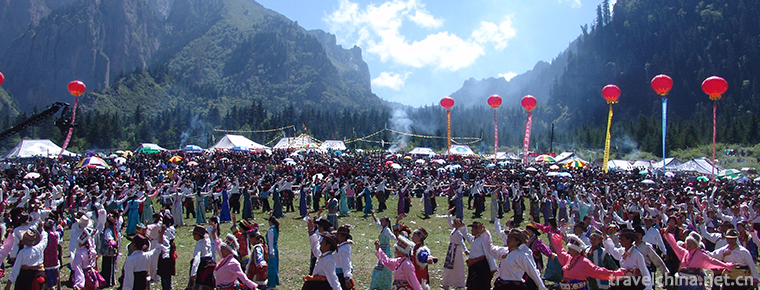
-
The Qiaos Famaily Compound
The Qiao's Famaily Compound: National AAAAA-level tourist attractions, national key cultural relics protection units, national second-level museums.
Views: 153 Time 2018-11-24 -
Wulong Karst Tourist Area Movie Transformers Place
Wulong Karst Tourist Area is located in Wulong District of Chongqing City. It has rare natural karst landscape, including karst caves, Tiankeng, ground crevices, canyons, peaks, alpine grasslands, etc.
Views: 223 Time 2018-12-12 -
Dongjiang Lake Tourist Area Coconut City
Dongjiang Lake Scenic Tourist Area is located in Zixing City, Hunan Province. It is a national scenic spot, a national 5A scenic spot and a national wetland park..
Views: 186 Time 2018-12-12 -
Yanling National Flower and Tree Expo Park
Yanling National Flower and Tree Expo Park (Yanling Flower and Tree Expo Park) is located in the eastern part of Xuchang City, Henan Province..
Views: 108 Time 2019-02-28 -
Zhijin cave
Zhijin Cave, located in Guanzhai Miao Township, Zhijin County, Guizhou Province, is located on the South Bank of Liuchong River, one of the sources of Wujiang River, 120 kilometers away from Guiyang, .
Views: 138 Time 2019-03-18 -
Steamed egg with sand
Steamed eggs with ginseng sand is a traditional Chinese medicine, which has the effect of invigorating qi, nourishing blood and soothing the mind..
Views: 157 Time 2019-03-24 -
Legend of Cowherd and Weaver Girl
Niulang and Zhinu are one of the four Chinese folk love legends (the other three are Legends of White Snake, Meng Jiangnu Crying Great Wall, Liang Shanbo and Zhu Yingtai). They derive from the star na.
Views: 309 Time 2019-06-08 -
Xingshan Folk Song
On May 20, 2006, Xingshan Folk Song was approved by the State Council to be included in the first batch of national intangible cultural heritage list..
Views: 153 Time 2019-07-08 -
Cao Ren
Cao Ren (168 - 23 May 6th), Zi filial piety, Han nationality. Pei country Qiao (today) Anhui Cao Cao, Bozhou From younger brother (from ancestor). The famous heroes of the Three Kingdoms period..
Views: 149 Time 2019-09-15 -
Scientific research on Chengdu Giant Panda Base
As of 2016, it has undertaken one national major basic research project (former "973" project), one national "Tenth Five Year Plan" high technology research (863 plan), several provincial, ministerial and municipal scientific research projects and Chengdu Giant Panda Breeding .
Views: 104 Time 2020-12-13 -
Geographical environment of Deyang
Deyang City is located in the northeast edge of Chengdu Plain, with geographical coordinates of 30 ° 31 ′ - 31 ° 42 ′ N and 103 ° 45 ′ - 105 ° 15 ′ E. Deyang borders Fucheng District of Mianyang City in the northeast, Santai County of Mianyang City in the East.
Views: 308 Time 2020-12-14 -
Leshan science and technology
By the end of 2018, Leshan had 12 provincial engineering technology research centers and 33 municipal engineering technology research centers. There are 83 high-tech enterprises and 353 Municipal Science and technology enterprises. There are .
Views: 175 Time 2020-12-17

